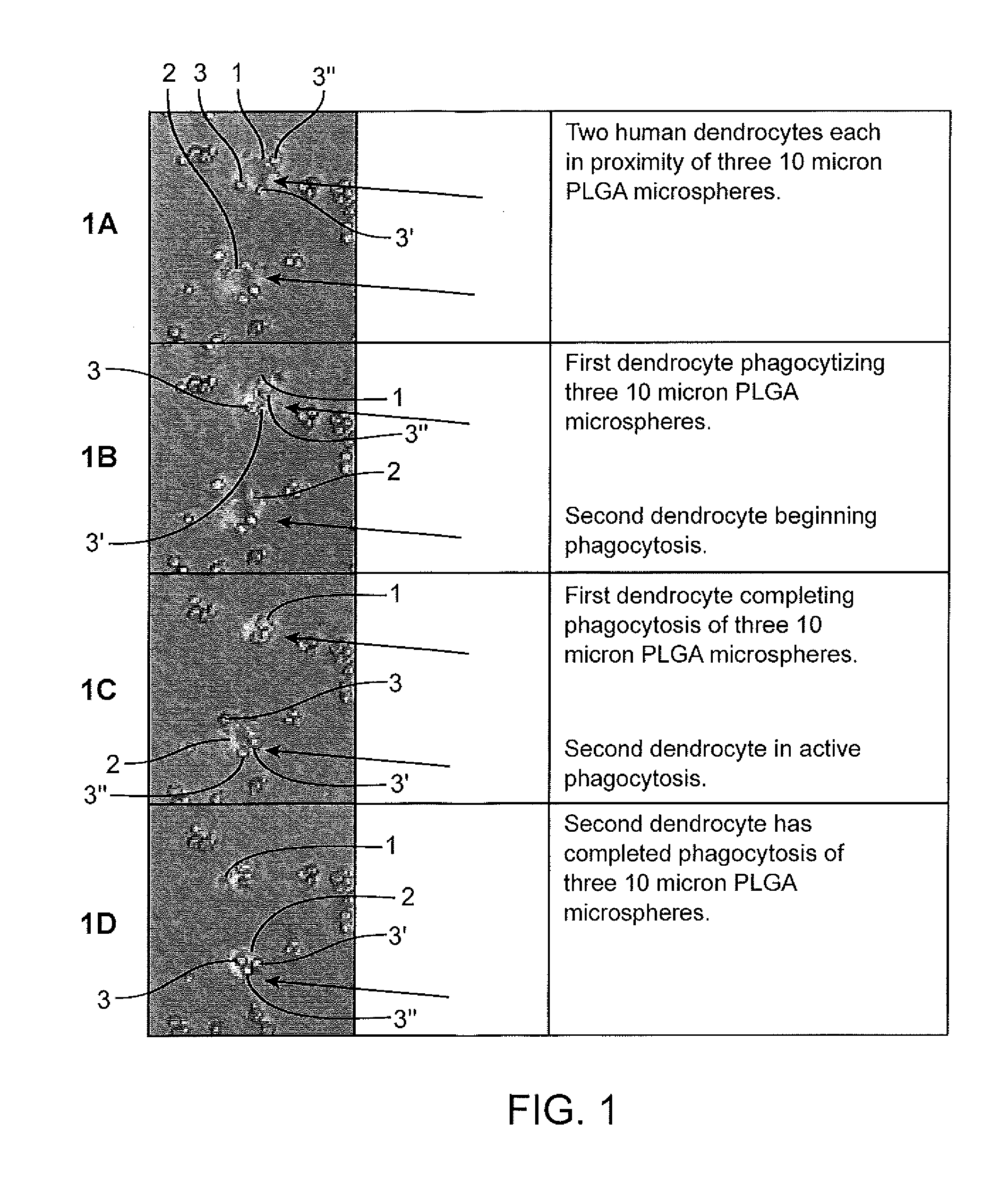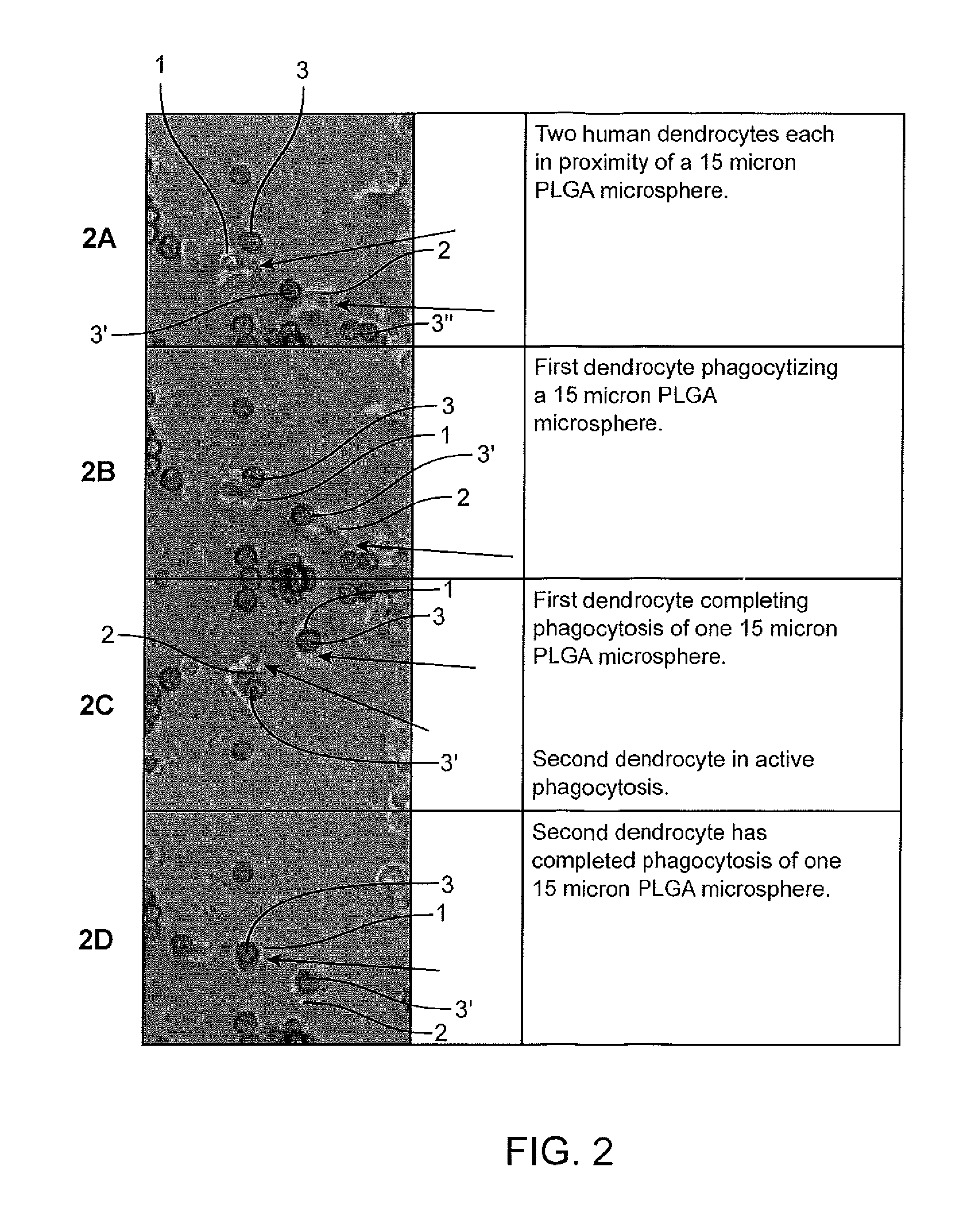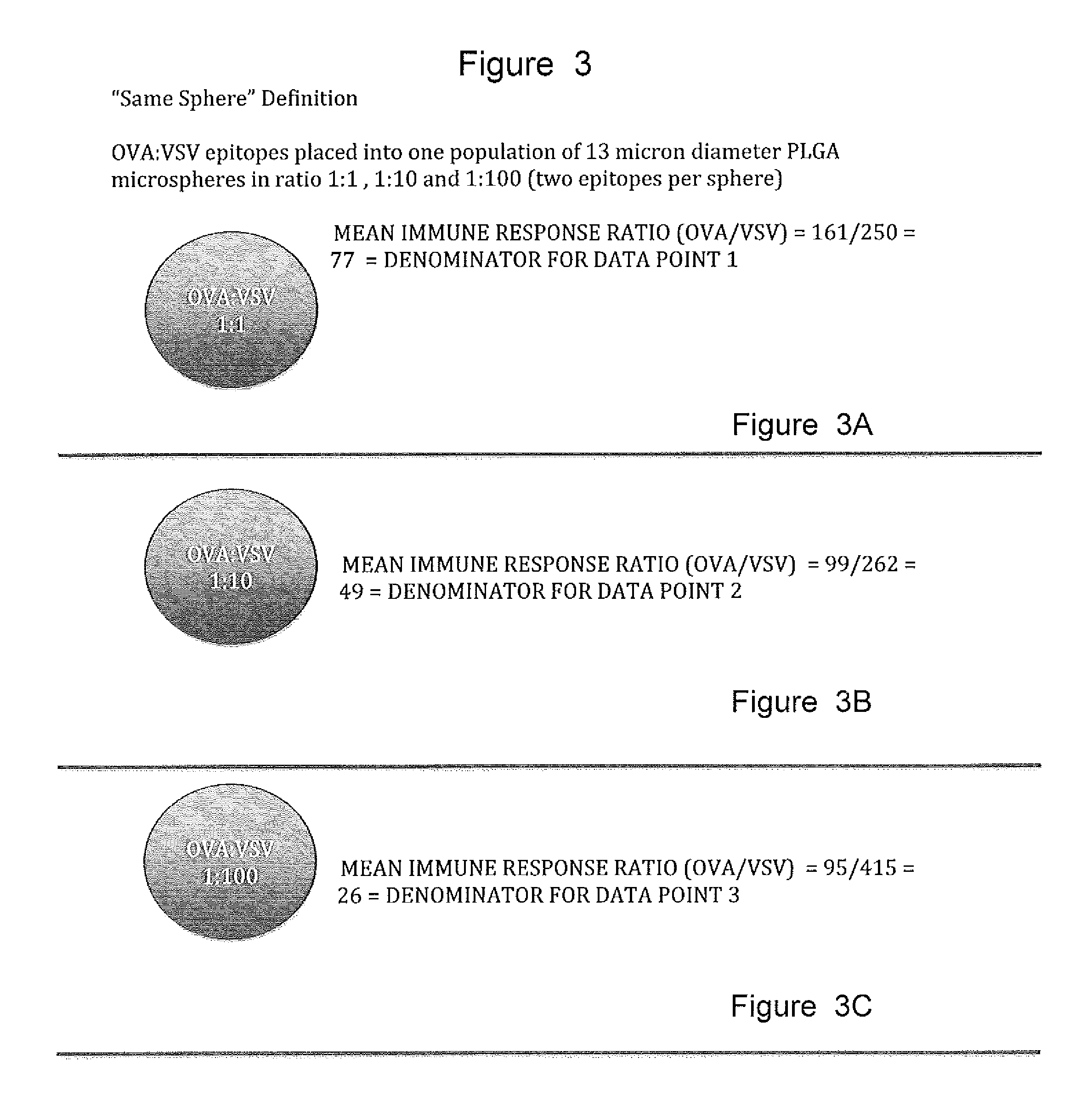Peptide particle formulation
a technology of peptide particles and formulations, applied in the field of peptide particles, to achieve the effect of reducing the dripping of the formulation
- Summary
- Abstract
- Description
- Claims
- Application Information
AI Technical Summary
Benefits of technology
Problems solved by technology
Method used
Image
Examples
example 1
[0241]In Example 1 10 micron diameter spherical particles 3, 3′, 3″, etc. comprised of poly(lactic-co-glycolic acid) (PLGA) are used. The particles had substantially the same diameter±10% or less. The particles were placed in a solution containing human dendrocytes 1 and 2. Photos were taken of the cells prior to (FIG. 1A), during (FIG. 1B) and (FIG. 1C) and after (FIG. 1D) the cells 1 and 2 consumed the particles. The particles 3, 3′, 3″, etc. were produced using a process as described within U.S. Pat. No. 6,116,516.
example 2
[0242]In Example 115 micron diameter spherical particles 3, 3′, 3″, etc. comprised of poly(lactic-co-glycolic acid) (PLGA) are used. The particles had substantially the same diameter±10% or less. The particles were placed in a solution containing human dendrocytes 1 and 2. Photos were taken of the cells prior to (FIG. 2A), during (FIG. 2B) and (FIG. 2C) and after (FIG. 2D) the cells 1 and 2 consumed the particles. The particles 3, 3′, 3″, etc. were produced using a process as described within U.S. Pat. No. 6,116,516.
[0243]Examples 1 and 2 show how groups of particles can be administered (placed in contact with dendrocytes) and used to determine the size of particles which the dendrocytes of the immune system readily consume. The results of Examples 1 and 2 indicate that for these dendrocytes, particles which are 10 microns in diameter are sufficiently small that multiple particles can be consumed by a single dendrocyte. The 15 micron particles of Example 2 indicate that, for these d...
example 3
[0245]Synthesis of antigen containing microspheres. Microspheres of defined size, and containing a single peptide species were synthesized as described in Table 2 below.
TABLE 2Reagent NameSupplierCat. No.PurityResomer 502HBoehringer Mannheim502H99%D-(+)-MannoseSigmaM602098%CMV pp65 peptide*American Peptide30526495%Phosphate-bufferedSigmaD8537100% saline (PBS)AcetoneSigma270725≧99.9% *Note:Any peptide may be used in the synthesis.
[0246]CMV pp65 peptide was solubilized in PBS at 25 mg / ml (hereafter Reagent A; stored at 4 C). Mannose was solubilized in PBS at 200 mgs+400 uL PBS (hereafter Reagent B; stored at room temperature).
[0247]For 5 mls of formulation: a) Place 200 mgs of Resomer 502H in glass vial; b) Add 5.0 mL acetone and mix by rocking until Resomer is completely solubilized; c) Place vial in sonicator; d) During sonication, add 80 uL of Reagent A slowly, drop-wise; e) During sonication, add 20 uL of Reagent B slowly, drop-wise; f) Cap vial tightly and continue to sonicate...
PUM
| Property | Measurement | Unit |
|---|---|---|
| diameter | aaaaa | aaaaa |
| diameter±20 | aaaaa | aaaaa |
| diameter | aaaaa | aaaaa |
Abstract
Description
Claims
Application Information
 Login to View More
Login to View More - Generate Ideas
- Intellectual Property
- Life Sciences
- Materials
- Tech Scout
- Unparalleled Data Quality
- Higher Quality Content
- 60% Fewer Hallucinations
Browse by: Latest US Patents, China's latest patents, Technical Efficacy Thesaurus, Application Domain, Technology Topic, Popular Technical Reports.
© 2025 PatSnap. All rights reserved.Legal|Privacy policy|Modern Slavery Act Transparency Statement|Sitemap|About US| Contact US: help@patsnap.com



